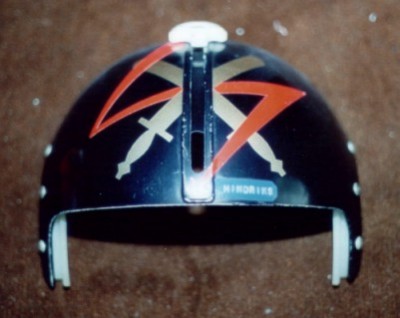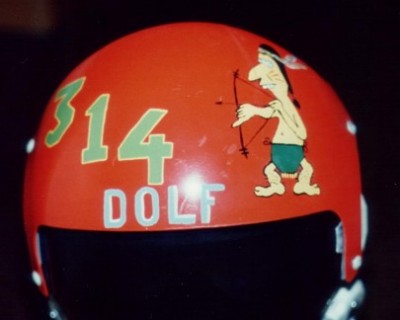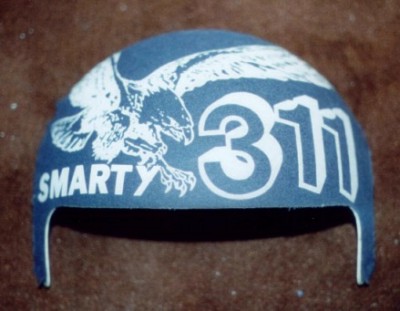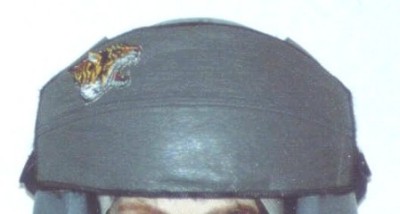From
the beginning of flight, the aviators had the urge to paint up their planes and gear.
The early leather helmets were sometimes adorned with names and unit insignia. Later with
the introduction of the first helmet-like hard hats it became easier to paint them. In the
United States the Korean War gave us some nicely decorated H-4 helmets. Through the ages,
the Airforce and Navy both went their separate ways. The Airforce painted their helmets,
while the Navy used reflective tape also.
Not many other countries around the world have done this. Very little examples are known
of decorated Soviet helmets, the only ones to surface are the helmets used with display
teams (Russian Knights, Sky Hussars). The United Kingdom started out with little markings
on their early Mk1's and also the helmets of the Red Arrows are a nice example. This
article will deal with the decorated helmets of the Royal Netherlands Airforce (RNLAF) as
this gives a nice example of methods and materials used.
Among the first helmets to be decorated by the RNLAF was the RAF type Mk1 helmet but it
became in to fashion on the single visor equipped HGU-22/P shells. Besides adding
reflective tape to the back of the helmet (to increase visibility by night) they started
out painting unit markings on the helmet cover. A nice example is pictured here, the 312
Squadron emblem featured two lightning flashes and also the Squadron colors were hand
painted on the cover. But in this case the cover was sprayed black and the Squadron
markings were cut out of a large adhesive sheet. 
This became common practice with the different squadrons and some very good artists
appeared among life support personnel. One of the more famous ones being Ad van Spaendonk,
this 314 SQN life support specialist added a personal touch to every helmet cover he
painted. All of his covers showed the 314 (Redskins) Indian. Besides this Native American
he also added a personal item to it. For instance a pilot named Mike had a singing Indian
holding a microphone. Bright colors were no exception and regulations did not seem to
exist.

The 306 SQN covers showed a giraffe and
these were also personalized. When the first double visor sets came in use (HGU-26/P) the
also did not escape the decoration fever.

In the early eighties, the life support
shops started to use felt as a cover material. This started together with the use of Scott
leather edge rolls and gray painted helmet shells. The felt was printed with the unit
marking and the pilot call sign was later added. The difference can be seen between both
311 SQN helmet covers shown here.


Also a cloth type material was used with
316 SQN. On some occasions there were some experiments at 322 SQN with leather on the
cover. All of these materials were glued on.
With the introduction of the HGU-55/P there was little room on the helmet to decorate.
This was overcome by painting the leather visor cover! The paint started to crack and wore
out. Some units send their covers to the local patch supplier who had the marking of their
unit sewn on. Now days, the painted covers still are around, as are the sewn ones. 313 SQN
for instance has a small tiger patch attached to their helmet cover after years of
painting them tiger striped.
Hopefully this will keep on as it gives a nice colorful touch to the green/gray flight
gear.

Flightgear Online would like to thank
Gert Jan Berger for his photos and experience on the matter. |